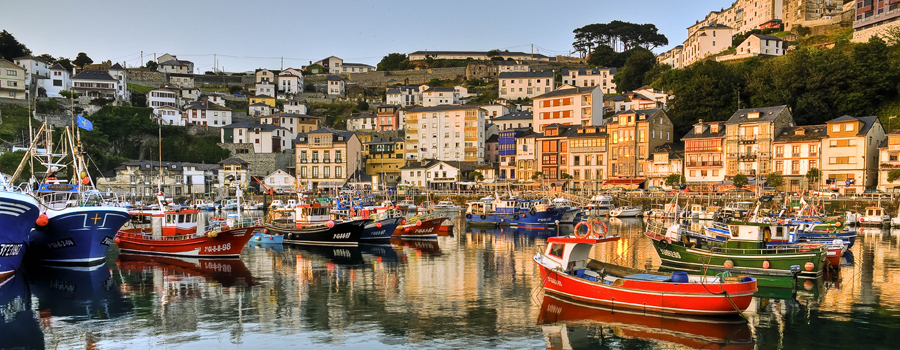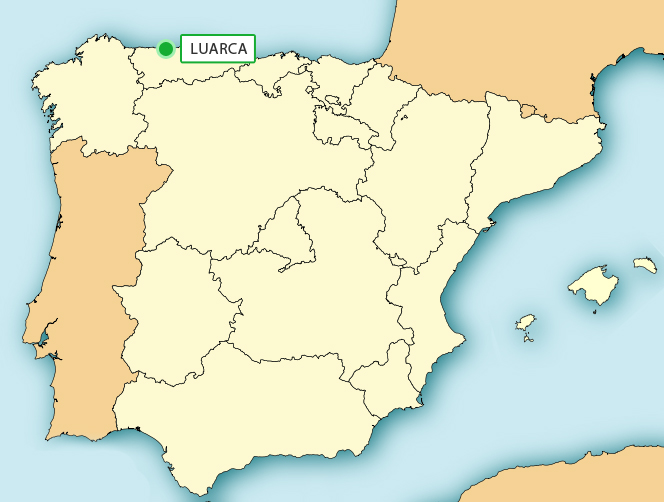Luarca impresses by being a stepped city between natural headlands, with spectacular views. It is known as the White Villa of the Asturian green coast, because of the white colour of its buildings. Its beautiful Hermitage of the Regalina, symbol of the town, was built on a cliff, Cape Busto an ideal place to walk. It is worth knowing its Barrio de la Pescadería and visiting the Casas de los Indianos with a unique architectural style.
Luarca, capital of Valdes, is situated on the north of Spain in the Principality of Asturias, 92 km from Oviedo. It has 4.934 inhabitants. It is a tiered village built on natural promontories which allow the visitor to enjoy a very beautiful landscape, which can be defined with the following words: sea, river and mountain. Its location on the western coast of Asturias makes it one of the villages of the Cantabrian coast which have a very characteristic marine environment.
Luarca was discovered by the Asturian archeologist José Manuel González and it goes back to the lower and middle Paleolitic Era. Until that time, through its long history, the Romans, the clergy, miners, fishermen and merchants made that place one of the most important ports of the fourteenth century. It was a time when the importation and distribution of salt under the orders of King Alfonso IX and the whale-fishing were the most fundamental activities in Luarca.
Nowadays, the village is known as the “White Villa” (La Villa Blanca) of the green coast of Asturias, due to the white color which is so characteristic of its buildings. As soon as one enters the village, they can see the Hermitage of Regalina (“La Ermita de la Regalina”), constructed in 1931 and considered as the symbol of the village, being situated on a cliff facing the sea.
Another impressive place because of its unimaginable views is the Busto Cape (“Cabo Busto”), an ideal place to go for a walk and just look at the sea. One can´t help walking along the narrow streets of the fishermen´s neighborhood, which is close to the dock. Crossing this neighborhood we arrive at the Chano Lookout (“Mirador del Chano”), in order to enjoy the best panoramic views of Luarca, that is, the harbor, the beaches, the cemetery, the river and, actually, the entire village.
At the high area of Luarca we can visit the Houses of “Indianos”, only some of which are well preserved. These are the homes of those who emigrated to America in the eighteenth century. At the same area, we can also visit Villa Excelsior, Rosario, La Argentina and Villa Carmen, where the old house of Severo Ochoa, a Spanish doctor awarded with the Nobel Prize of Physiology and Medicine in 1969, can be found.
Some of the most typical dishes of Luarca are its stew of fish and seafood, and its stew of potatoes with rockfish.




